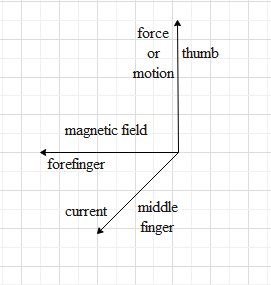
If a current is passed in a spring it
A. gets compressed
B. gets expanded
C. oscillates
D. remains unchanged
Answer
576.3k+ views
Hint: To answer this question, find the force on two infinitely long current carrying wire, where the current is flowing in the same direction. Apply the same principle to the spring considering it as made of a number of circular loops. Then we can find our answer.
Complete answer:
Consider two infinitely long current carrying wire which carries current in the same direction. Now, due to the flow of current in the first wire, a magnetic field will be induced. Now the second current carrying wire will be in this magnetic field. We know that a current carrying wire in a magnetic field always experiences a force on the wire and the direction of force can be given by the right-hand rule. So, the direction of force on the second wire due to the magnetic field induced from the first wire will be towards the first wire. Similarly, the first wire will also be attracted towards the second wire because of the magnetic field produced due to the current flow in the second wire. So, the wires will attract each other.
Now, when we consider a spring, we can say that the spring is made of the circular loop. If we take the side view of the spring, we can see that the direction of flow of current will be the same in each loop of the spring. So, we can say that the magnetic field induced due to current flow in each of the loops will give the direction of force on the loops of the springs towards each other. So, the loops of the spring will attract each other and the spring will get compressed.
So, the correct answer is “Option A”.
Note:
The right-hand rule is a rule which gives us the relation between the direction of the magnetic field and the direction of current flow through the conductor and the direction of force on the conductor.

If we take our thumb, forefinger and the middle finger of the right hand in perpendicular direction to each other and if the forefinger gives the direction of the magnetic field and the middle finger gives the direction of the current, then the direction of the thumb gives us the direction of force on the wire.
Complete answer:
Consider two infinitely long current carrying wire which carries current in the same direction. Now, due to the flow of current in the first wire, a magnetic field will be induced. Now the second current carrying wire will be in this magnetic field. We know that a current carrying wire in a magnetic field always experiences a force on the wire and the direction of force can be given by the right-hand rule. So, the direction of force on the second wire due to the magnetic field induced from the first wire will be towards the first wire. Similarly, the first wire will also be attracted towards the second wire because of the magnetic field produced due to the current flow in the second wire. So, the wires will attract each other.
Now, when we consider a spring, we can say that the spring is made of the circular loop. If we take the side view of the spring, we can see that the direction of flow of current will be the same in each loop of the spring. So, we can say that the magnetic field induced due to current flow in each of the loops will give the direction of force on the loops of the springs towards each other. So, the loops of the spring will attract each other and the spring will get compressed.
So, the correct answer is “Option A”.
Note:
The right-hand rule is a rule which gives us the relation between the direction of the magnetic field and the direction of current flow through the conductor and the direction of force on the conductor.

If we take our thumb, forefinger and the middle finger of the right hand in perpendicular direction to each other and if the forefinger gives the direction of the magnetic field and the middle finger gives the direction of the current, then the direction of the thumb gives us the direction of force on the wire.
Recently Updated Pages
Master Class 12 Economics: Engaging Questions & Answers for Success

Master Class 12 Maths: Engaging Questions & Answers for Success

Master Class 12 Biology: Engaging Questions & Answers for Success

Master Class 12 Physics: Engaging Questions & Answers for Success

Basicity of sulphurous acid and sulphuric acid are

Master Class 12 Business Studies: Engaging Questions & Answers for Success

Trending doubts
What are the major means of transport Explain each class 12 social science CBSE

Which are the Top 10 Largest Countries of the World?

Draw a labelled sketch of the human eye class 12 physics CBSE

How much time does it take to bleed after eating p class 12 biology CBSE

Explain sex determination in humans with line diag class 12 biology CBSE

Differentiate between homogeneous and heterogeneous class 12 chemistry CBSE




